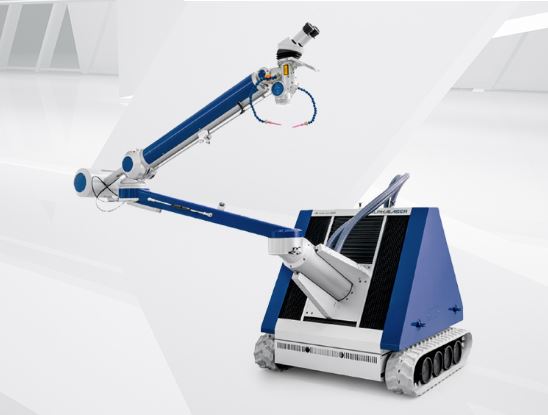Time Saving Mould Repairs
Tungsten inert gas (TIG) welding is the traditional means of repairing worn or damaged mould and die surfaces. However, this long-established process does involve a range of quite serious disadvantages.
Time consuming and metal softening
With a large mould component, the component must be heated slowly before the TIG repair can even begin. This is to prevent the base metal from cracking from the heat generated in the process. Once the TIG welding has been carried out, the component then has to be cooled down gradually. This heating and cooling can take hours, delaying any manual bending or CNC machinery work needed to finish the repair.
Another problem with TIG welding is the deep heat-affected zone (HAZ) it creates. The HAZ is the area below the melted metal and the unaffected base metal beneath it. With TIG, the HAZ can be as deep as 0.15in (3.81mm). This can create metallurgical changes resulting in a reduction of hardness of the metal in that zone. In fact, with TIG welding, the material in the HAZ can be softened by 15 to 22 HRc points. Such damage can decrease the moulding components wear life by so much that a subsequent heat treating operation may be required.
Faster and cooler

Pulsed laser welding machines fire a laser in 5-10 millisecond pulses. These pulses melt the base workpiece metal and filler wire that is deposited. The well pool then re-solidifies before the next pulse. The process offers high peak power but low heat output compared to a TIG welding operation.
With its low heat output, there is no need for the controlled heating and cooling of the workpiece as with TIG welding. In fact, most pulsed laser welded workpieces are cool to the touch straight after the welding process.
Through its low heat output, the HAZ is considerably reduced to between 0.008in (0.02032mm) and 0.012in (0.3048mm) with softening down to a minimal 2 to 4 HRc points.
More repeatable, more accurate
Precise and accurate TIG welding requires a high level of operator skill otherwise the bead path will include peaks and valleys. Pulsed laser welding deposits a more consistent bead height and allows operators to start or stop the process at precise positions.
For enhanced accuracy and precision in mould repair, our product partner, Alpha Laser, features microscopes with crosshairs on the mobile ALFlak and ALM welding machines, allowing operators to precisely position the laser beam. In addition, only four parameters need to be adjusted – voltage, frequency, pulse time and spot size.
The machines can be operated manually, in semi-automated mode or in full CNC mode. In semi-automatic mode, the operator can lock any or all axes during laser operation to rotate at a set speed, weld in a straight line or follow a complex angle.
Weld spots as small as 0.1016mm
A further example of the advantages of pulsed laser welding compared to TIG welding is that the laser welding machine operator can weld a spot as small as 0.004in (0.1016mm) whereas the smallest on a micro TIG unit is 0.04in (1.016mm)!
For information and full details of Alpha Laser’s range of pulsed laser welding systems including the ALFlak and ALM mobile laser welding machines, please contact sales@tlm-laser.com